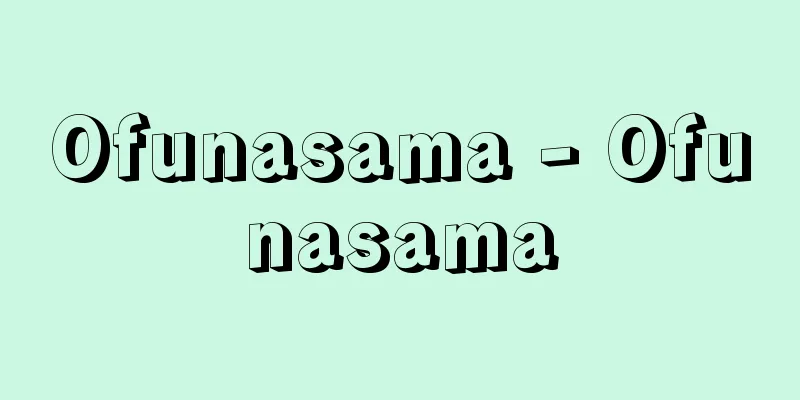Eight flags

|
A social organization centered on the Manchus in China during the Later Jin and Qing dynasties, on which the military system was also based. People who belonged to the Eight Banners system were called Bannermen, and were a privileged class at the time. The Eight Banners refer to the eight military banners, including the four-color banner of yellow, white, red, and blue (called the True Yellow Banner, etc.) and the four-color banner with a border around the four-color banner (called the Pen Yellow Banner, etc.). The Jurchen people made their living from hunting, but at the beginning of the 17th century, Nurhaci (the founder of the Qing dynasty) organized a social organization based on the hunting game of Makigari. This was the beginning of the Eight Banners. After Nurhaci pacified the surrounding Jurchen tribes, he organized them, first into Two Banners, then Four Banners, and by the time the Later Jin Dynasty was established in 1616, the Eight Banners were created. Furthermore, during the reign of Emperor Taizong Hong Taiji, when the Han people of Inner Mongolia and the Liaodong Peninsula were pacified, the Eight Banners (later known as the Eight Banners Manchuria), which had previously been centered around the Manchus, were replaced by the Eight Banners Mongolian and Eight Banners Han armies, which were centered around the Mongolians and Han people, and the total number of banners expanded to 24. The composition of each banner and the number of bannermen varies depending on the era, but originally, 300 young men were called a Nil (meaning arrow in Manchu, called Saryo in Chinese), which was the basic unit, and five Nil made up a Jialan (called Sanling in Chinese), and five Jalan made up a Gushan (called Banner in Chinese). In other words, one banner had 7,500 bannermen. However, the Eight Banners of the Mongol and Han armies were far fewer in number. During the Later Jin Dynasty, all Manchus were organized into eight banners, and the country was also a banner, with taxation, military service, bonuses, and distribution of plunder all carried out on the basis of Nil and banners. Each banner had a "Dutong" (chief official) as the administrative and military chief, but at the same time, Nurhaci himself and his direct descendants ruled over each banner as "banner kings," and Nurhaci, the Khan (emperor), was also the banner king of the two banners, the Zhenghuang Banner and the Zhenghuang Banner. During the Later Jin Dynasty, politics were conducted by a consensus among these banner kings, and the position of khan was also determined by recommendation by the banner kings. With the founding of the Qing Dynasty in 1636 and its rule over the whole of China from 1644 onwards, the bannermen became a privileged class as rulers compared to many of the peoples they ruled. In addition to being granted economic privileges such as exemption from taxation and the allocation of banner land, they were also administratively registered as banner citizens separate from the general public, and were subject to the criminal laws of their respective banners separately from those of ordinary people. The bannermen's economic base was in their banner territories, but the rise of the commodity economy and extravagance led to their downfall, and they fell into poverty by the beginning of the 18th century. To overcome this situation, Emperor Yongzheng reformed the Eight Banner system in an attempt to reduce the power of the banner kings and bring the Eight Banners under the power of the emperor, but by the end of the 18th century there was no way to alleviate the bannermen's poverty, and the Eight Banners could no longer be an effective military force against the various rebellions, including the White Lotus Rebellion that began in the latter years of the Qianlong era. [Yoshio Hosoya] [Reference] |Source: Shogakukan Encyclopedia Nipponica About Encyclopedia Nipponica Information | Legend |
|
中国、後金(こうきん)国と清(しん)朝を通じての満州人を中心とする社会組織で、これを基礎に兵制も構成された。八旗制に属する人を旗人(きじん)といい、当時の特権階級である。八旗とは黄、白、紅、藍(あい)の四色旗(正黄旗などと称する)と、この四色旗に縁どりをした四色旗(鑲(じょう)黄旗などと称する)の合計8種の軍団の旗印をさす。女直(じょちょく)(女真(じょしん))人は狩猟を生活基盤としていたが、17世紀の初めにヌルハチ(清の太祖)の手で、狩猟の際の巻狩りを原型にして社会組織が構成された。これが八旗の始まりである。ヌルハチは周辺の女直諸部族を平定するとこれを組織化して、初めは二旗、ついで四旗とし、1616年の後金国成立時には八旗ができあがった。さらに太宗ホンタイジ時代に内蒙古(もうこ)や遼東(りょうとう)半島の漢人を平定すると、それまでの満州人を中心とした八旗(後の八旗満州)に対して、蒙古人、漢人を中心とする八旗蒙古、八旗漢軍が組織され、計24旗に膨張した。 各旗の構成、所属旗人の数などは時代によって異なるが、原型は、300人の壮丁を一牛彔(ニル)(満州語で矢の意味。漢名は佐領(さりょう))とし、これが基本単位で、五ニルで一甲喇(ジヤラン)(漢名参領(さんりょう))、五ジャランで一固山(グーサ)(漢名旗)であった。つまり一旗には7500人の旗人が所属した。ただし、八旗蒙古、漢軍は数のうえでかなり少ない。後金国時代に満州人のすべては八旗に編成され、国は同時に旗であって、徴税、軍役、賞与、略奪物の分配などすべてニルと旗を単位に行われた。各旗には行政、軍事上の長官として「都統」が設置されたが、同時に、ヌルハチ自身とその直系の子孫たちが「旗王」として各旗を支配し、汗(ハン)(皇帝)であるヌルハチは鑲・正黄旗の二旗の旗王でもあった。後金国時代の政治はこれら旗王の合議制で行われ、ハン位も旗王の推挙によるものであった。 1636年の清朝の建国と44年以後の中国全土の支配に伴い、多くの被支配者に対して旗人は支配者として特権階級となり、徴税の免除、旗地の支給などの経済的特権とともに、行政上でも民籍とは別に旗籍に編入され、刑法も一般人とは別に各旗に従った。 旗人の経済的基礎は旗地にあったが、商品経済の隆盛と奢侈(しゃし)などから破綻(はたん)をきたし、18世紀初めにかけて生活困窮に陥った。この状況を打破して、あわせて旗王権力を削減して皇帝権力の下に八旗を掌握しようと、八旗制を改革したのは雍正(ようせい)帝であるが、18世紀末には旗人の困窮は救済方法もなく、乾隆(けんりゅう)末年からの白蓮(びゃくれん)教徒の乱をはじめとする諸反乱に対して、八旗は軍事力としても有効でありえなくなっていた。 [細谷良夫] [参照項目] |出典 小学館 日本大百科全書(ニッポニカ)日本大百科全書(ニッポニカ)について 情報 | 凡例 |
Recommend
Hallé, A.
...The discovery of X-rays by Roentgen in 1895 br...
External breast - Gainyu
The outer layer of the nucellus is called the oute...
adoption
...The basic function of a Japanese family and a ...
HST - High-Speed Stewardess
Abbreviation for High Speed Train. A streamline...
Acer carpinifolium (English spelling) Acercarpinifolium
… [Ken Ogata]. . … *Some of the terminology that ...
Type I explosive
…The latter explosives are substances that can on...
Omo languages - Omoshogo
…Ethiopia is home to 70-80 languages belonging ...
Magadan (English spelling)
The capital of Magadan Oblast in northeastern Russ...
Territorial airspace
The airspace above a nation's territory and t...
East Kawa
[1] 〘Noun〙① East of the river. ※Honcho Untitled Po...
Basso (English spelling) Lelio Basso
1903‐80 Italian socialist. Born in northern Italy....
Athena Parthenos
Statue of the goddess Athena, the chief deity of t...
Maggot - Maggot
A common name for the larvae of mainly flies in t...
Cetoniinae
...The larvae feed on these and grow, then pupate...
Holoubek, G.
...The spirit of boycotting all theaters that had...









